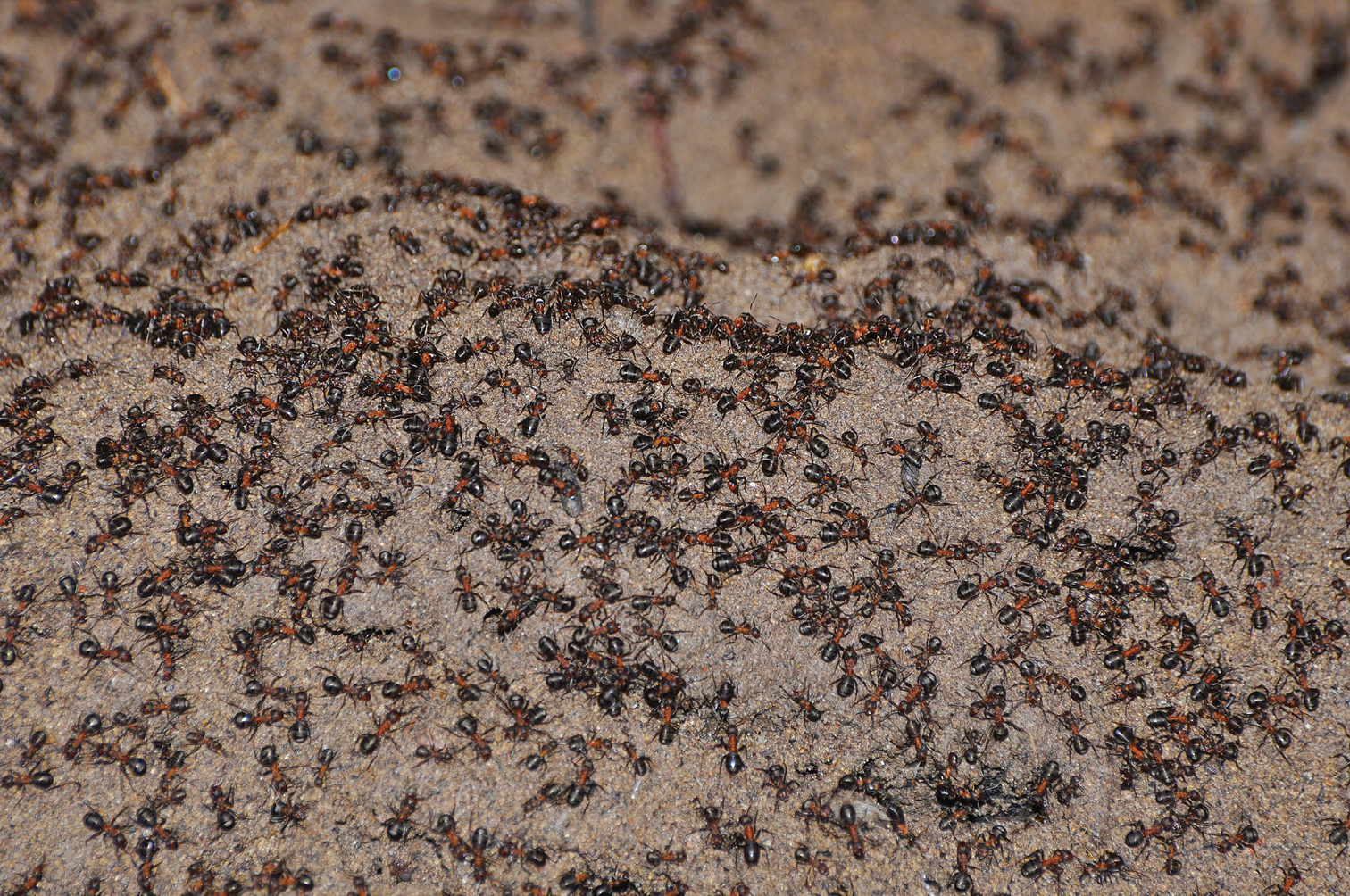

At first, it sounds like a ‘50s horror flick: up to a million cannibalistic ants escaped from a Soviet nuclear bunker after years of isolation. But fear not—the story of these plucky insects is actually a tale of resourcefulness, persistence, and survival against all odds (which, yes, also happens to involve cannibalism).
In 2013, a team of Polish biologists, led by Wojciech Czechowski, stumbled across a huge population of wood ants trapped inside an abandoned munitions bunker in western Poland, originally built in the ’60s to store nuclear weapons. Hundreds of thousands of unlucky insects had apparently wandered too far from their nearby nest and managed to fall into an open ventilation pipe. This accidental trapdoor dropped the ants into a sealed chamber with no light, heat, or food sources.
Intrigued, the scientists kept watch over the secluded swarm. They realized that since the pipe opened up in the middle of the ceiling, the ants were unable to crawl back to the surface (unless they spontaneously gained spider powers). But did the ants give up hope? No. They rolled up their tiny sleeves and did their best to organize into a functional society. In total darkness, they built a flat quasi-nest out of dirt and debris, which they maintained throughout the seasons.
When the researchers revisited the bunker two years later, they found that the nest was still thriving, with close to a million estimated occupants. A continuous supply of ants raining down from the ventilation pipe kept the population numbers up, even though there were no signs of successful reproduction. Still the scientists wanted to know: How did the bunker colony continue to survive without access to foraging grounds? According to their new study published in The Journal of Hymenoptera last week, the short answer is cannibalism.
“I wasn’t surprised,” says study co-author Maák István, an ant-behavioral ecologist from the University of Szeged in Hungary. “It was a logical option for them to survive in this way.”
By 2016, the bunker was carpeted with almost two million dead ants. Per their tradition, many of these carcasses had been organized into giant waste piles, called cemeteries, consisting of hundreds of corpses. From these piles, the team collected around 150 bodies and analyzed them for signs of cannibalism. They found gnawed holes and bite marks on 93 percent of the samples.
István explains that wood ants typically eat sap, fruit, and honeydew (a sticky-sweet secretion from aphids). Their method for cannibalizing the dead is slightly more brutal: “It’s like opening a can,” István says, describing how they crack a hole in a corpse’s thorax or abdomen to get to the muscles, organs, and fat inside.
Thankfully, these ants no longer have to continue the cannibalistic ritual that sustained them for all these years. The scientists finally installed an escape route—a three-meter-long wooden ladder that allowed the colony to reach the ventilation pipe, travel out of the bunker, and return to the mother nest. When the scientists returned to the site in 2017, the site was deserted.

Disposal of the dead is a hugely important aspect of social insect societies. Ants, wasps, bees, and termites all have designated “undertakers,” whose job it is to recognize and remove lifeless bodies from the nest. For termites, cannibalism is one of their primary means of disposal. Ants and bees, though, tend to avoid it for hygienic reasons, István says: They don’t want to spread parasites or diseases by feeding on the wasted flesh.
And yet cannibalism can be necessary in extreme circumstances (like “trapped in a nuclear bunker” extreme). Corpses can provide essential nutrients when all other food sources are scarce. Wood ants in particular will do whatever it takes to survive, István says. They’re notorious for their massive “ant wars,” where they fight with nearby colonies over territory. In sparse times their fallen enemies are sometimes carried back to the nests and eaten.
Overall, cannibalism is fairly understudied in most species of insects. This bunker provided a “unique opportunity to study a novel behavior in ants,” says Alice Walker, an entomologist at the University of Liverpool, who wasn’t involved in the Poland study. Ultimately, she says, this just “illustrates how good ants are at adapting to harsh environments, which is one of the reasons they’ve been so successful since they evolved 150 million years ago.”